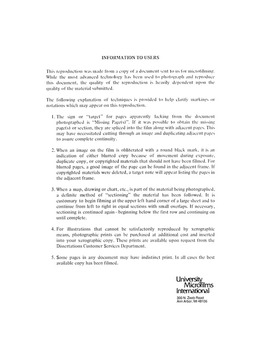| dc.contributor.author | Coats, Charles Fredrick, | en_US |
| dc.date.accessioned | 2013-08-16T12:28:34Z | |
| dc.date.available | 2013-08-16T12:28:34Z | |
| dc.date.issued | 1982 | en_US |
| dc.identifier.uri | https://hdl.handle.net/11244/4997 | |
| dc.description.abstract | A Yukawa-type potential is then examined and rejected, followed by a model using two particles and a sphere with a one dimensional gauge group. | en_US |
| dc.description.abstract | Beginning with a conformal transformation of the general Lagrangian based on the curvature of a principal fibre bundle with space-time base manifold and Lie Group fibres, the standard field equations are then derived by the variational method. | en_US |
| dc.description.abstract | Next, the guage field equations for U(1) are compared with the electromagnetic field equations of Gordon's and of Ehler's work with the optical metric. This suggests that scalar fields in the group metric can affect the speed of propagation of the corresponding gauge fields, and might produce short range effects. | en_US |
| dc.description.abstract | Finally, a model is developed using the two particles and a sphere with a two dimensional abelian gauge group. Here, l/r('2) force terms vanish when the particles are far apart and reappear when they are close. This short range effect is due entirely to the scalar field - gauge field interactions. | en_US |
| dc.format.extent | iv, 82 leaves : | en_US |
| dc.subject | Physics, Elementary Particles and High Energy. | en_US |
| dc.title | Short range effects : | en_US |
| dc.type | Thesis | en_US |
| dc.thesis.degree | Ph.D. | en_US |
| dc.thesis.degreeDiscipline | Homer L. Dodge Department of Physics and Astronomy | en_US |
| dc.note | Source: Dissertation Abstracts International, Volume: 43-05, Section: B, page: 1528. | en_US |
| ou.identifier | (UMI)AAI8224190 | en_US |
| ou.group | College of Arts and Sciences::Homer L. Dodge Department of Physics and Astronomy | |
